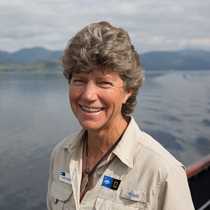An early morning rumble of engines provided our wake-up call, as Lord of the Glens prepared to sail from Tobermory to Craignure, a ferry port on the west edge of Mull. Once at Craignure, we disembarked and traveled by coach across the rugged, green Isle of Mull, one of the larger islands of the Inner Hebrides, with a population of just over 3,000 people. The bus took us to the small village of Fionnphort on the far side of Mull, where we had a short ferry ride across the channel to Iona.
“There’s something special about Iona,” is a frequent comment made by visitors to this tiny island, and it does have a special feel. The island has been a sacred site since Saint Columba established a monastery there in 563 AD, spreading Celtic Christianity across the pagan Pictish country that we now know as Scotland. Around 1200 AD, the sons of Somerled, King of the Isles, established a Benedictine abbey on the island. During our visit, we had the chance to visit the restored structure, wander the peaceful ruins of the nunnery, and see the king’s graveyard, where Scottish, Irish, and Norwegian kings—including Duncan, MacAlpine, and Macbeth—have been buried over the centuries.
After lunch at the Columba Hotel, we crossed back to the Isle of Mull for a visit to Duart Castle. The castle is perched on a prominent point on the shore, an imposing building with a far-reaching view across the channel. This seat of Clan MacLean was constructed in the mid-13th century, then fell to ruins after the Macleans lost it following the first Jacobite uprisings of the 17th century. Restored in the early 1900s, the castle now functions both as a museum and a residence, with exhibits and displays for visitors. We had the chance to explore the castle, up and down spiraling staircases, and through the restored rooms, some decorated to provide the atmosphere of an old clan castle, complete with “lobster” in the kitchen pots and a Spaniard in the dungeon.
We had recap as we sailed from Craignure to Oban. We heard about the seabirds we’ve been seeing and the story of the sea eagles of Mull—massive birds with an eight-foot wingspan that were reintroduced into Scotland over several decades, beginning in the 1970s. It may have been a sea eagle we saw soaring above the hills as we approached Duart Castle.
After dinner we enjoyed a whisky tasting with Frances, a local expert on this Scottish delight. With light still lingering into the evening, some took the chance to see a bit of Oban, our port for the night.









